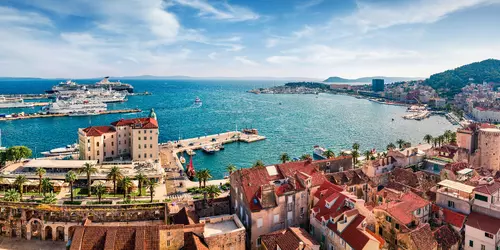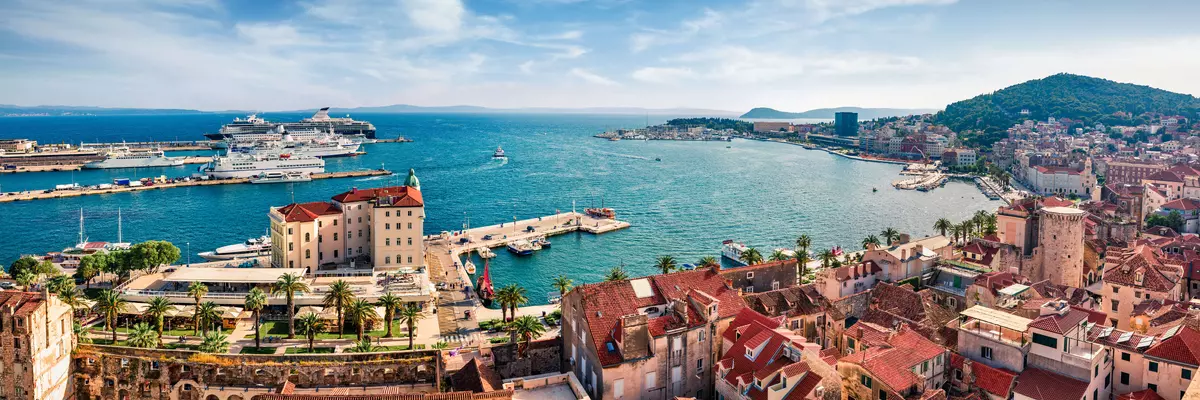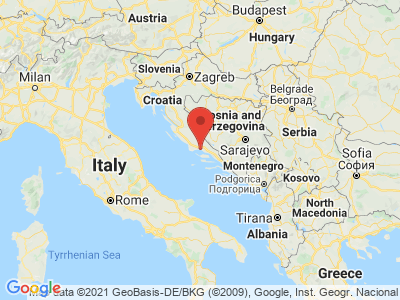Climate Table Split
Jan | Feb | Mar | Apr | May | Jun | Jul | Aug | Sep | Oct | Nov | Dec | |
|---|---|---|---|---|---|---|---|---|---|---|---|---|
| Max. Temperature | 10° | 11° | 13° | 17° | 22° | 27° | 30° | 29° | 25° | 20° | 15° | 11° |
| Min. Temperature | 5° | 6° | 8° | 11° | 15° | 19° | 21° | 21° | 18° | 14° | 10° | 6° |
| Sun Hours | 4 | 5 | 6 | 7 | 9 | 10 | 11 | 10 | 8 | 7 | 4 | 3 |
| Water Temperature | 12° | 12° | 12° | 14° | 17° | 21° | 23° | 24° | 22° | 20° | 17° | 14° |
| Rain Days | 9 | 8 | 8 | 8 | 6 | 6 | 3 | 4 | 5 | 7 | 10 | 10 |
The climate year of Split
UNESCO has put Split with its thousands of years old history on the list for the protection of historical world heritage. It was formed about 1700 years ago on the rivers Jadro and Movnica and has the warmest climate on the Mediterranean north coast. In winter, with its mild climate, it acts as a pleasant oasis on the Croatian Adriatic coast. Split is situated on a peninsula with the Mosor mountain range in the hinterland, the Kozjak mountain range to the northwest and the Perun mountain range to the east. The old city center of Split is located at the eastern end of the peninsula and in front of it are the islands of Brac, Hvar, Solta and Ciovo. The largest island is Brac, which can be reached by speedboat. From there comes the white stone from which the White House in Washington, the New Court in Vienna and the Parliament in Budapest are built. It is still quarried today in the local quarries.
General information about Split
Split today is a modern metropolis with higher education, universities and economic institutions, but has many historical monuments from its 1700 year old past well preserved. The landmark of the city is the mountain "Marjan" with the largest and most attractive natural park in the city. The center of the old town of Split is Diocletian's Palace with its cathedral, built between 295 and 305. It served as the retirement residence of the Roman emperor Diocletian. The emperor's mausoleum was converted into a cathedral in the 7th century and is considered the oldest Catholic cathedral in the world. The visitor can climb 200 steps to the bell tower and as a reward gets a magnificent view over Split. Already at the beginning of construction, the Egyptian Sphinx, which still stands guard in front of the cathedral, was 2000 years old. The peristyle is the main square of the palace, where the emperor received his guests for audience, today the visitor can have refreshments in the café. The emperor's chambers were located in the vaulted cellars, which are now teeming with souvenir stalls.
Tourism Split
The best time to visit Split is June to September, with maximum average temperatures of 25 to 30 degrees, with the least rainfall in July and August. The most hours of sunshine (10 to 11) from June to August and the highest water temperatures of 21 to 24 degrees from June to October. Nine to ten rainy days are counted monthly from November to January, and the humidity is correspondingly high in these months. The mentioned temperatures, rainy days and sunshine hours are not exact data, but average data.


